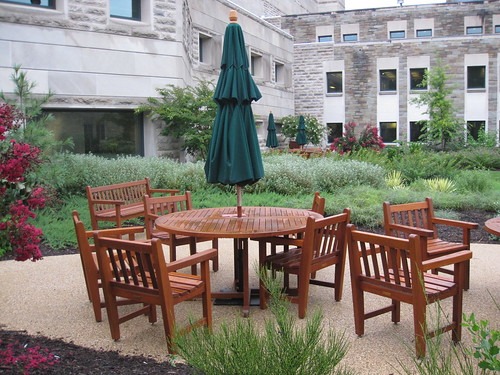Teak furniture has long been heralded as the pinnacle of durability and elegance in the realm of outdoor furnishings. The allure of its golden-brown hues and a fine grain texture captivate not only the eyes but also the hearts of outdoor enthusiasts. Yet, a question looms over this coveted material: Can teak furniture be left outside? As we unravel this query, you may find your perception shifting regarding the resilience of this extraordinary wood.
First, let’s establish the essence of teak itself. Teak, scientifically known as Tectona grandis, originates from the lush tropical forests of Southeast Asia. Its remarkable properties stem from its high natural oil content, which endows it with a unique resistance to the ravages of moisture, insects, and the sun’s harsh rays. This inherent resilience begs the question: Why wouldn’t teak furniture flourish outdoors?
Many homeowners retreat indoors at the mere whisper of winter, hastily dragging their beloved outdoor pieces alongside them. However, it’s essential to realize that teak’s durability is a game-changer. Unlike most woods, which succumb to the elements over time, teak wood is a fortified titan that can withstand the chill. Nevertheless, this doesn’t imply negligence. Understanding how to care for your teak furniture through the seasons reveals a wealth of insights.
As fall gives way to winter, the environment around teak furniture transforms drastically. While heavy snowfalls and biting winds may not directly harm teak, prolonged exposure to extreme conditions can be detrimental. The frigid temperatures, combined with moisture, are an invitation for potential issues. Have you ever noticed how the skin of an individual can crack when exposed to cold and dryness? Teak, albeit formidable, can likewise exhibit adverse effects if left uncovered during harsh weather, leading to surface cracking known as “checking.”
What if we told you that there’s a balance to strike? The answer isn’t a simple yes or no. In fact, many aficionados of teak furniture advocate for leaving it outdoors year-round, under certain circumstances. The natural oils in the wood act as a protective barrier against the elements, ensuring longevity and stunning aesthetics. But there’s more to it than merely taking the plunge.
One aspect to consider is the placement of your furniture. Strategically positioning your teak pieces can safeguard them from the most severe weather influences. For instance, placing a table or chairs beneath an awning or a tree canopy can shield them from relentless rain or snow. This small change can significantly diminish the wear and tear. Think of this as providing your furniture with a warm, cozy blanket in the winter chill.
Moreover, while teak can resist the elements, periodic maintenance is essential to retain its signature golden hue. Over time, exposure to the elements can lead teak to develop a silver-gray patina. While some view this transformation as a charming sign of weathering, others prefer the original richness of color. To rejuvenate your furniture and maintain its vibrancy, a light sanding followed by a coat of teak oil can restore its splendor.
Let’s delve deeper into the protective measures you can embrace. During the off-seasons, utilizing furniture covers can prove invaluable. These covers act as a shield against snow, ice, and the grime that accompanies winter storms. Ensure that the covers are breathable to prevent moisture build-up, which can lead to mold and mildew. Think of this as an insurance policy, safeguarding your investment against the unrelenting tide of winter.
Yet, how does one ascertain when it’s time to bring the furniture indoors versus allowing it to brave the outdoor elements? A keen eye for symptoms can guide your decisions. If you notice excessive moisture accumulation or signs of wear due to environmental exposure, it may be time to relocate your furniture to a sheltered space. Understanding the nuances of your local climate can also influence your approach. Areas prone to severe winter conditions may necessitate more cautious measures than milder climates.
As you contemplate your options, consider also the virtues of indoor storage. If your furniture pieces are particularly sentimental or of high value, storing them away during the harshest months may provide peace of mind. Your teak furniture can flourish when given the right environment—a clean garage or a dedicated storage shed can work wonders, ensuring they remain in impeccable condition.
In conclusion, the question of whether teak furniture can be left outside transcends a mere yes or no. The answer hinges on understanding teak’s unique characteristics, anticipating environmental challenges, and implementing proactive maintenance steps. Winter doesn’t have to mean an end to the beauty and functionality of your outdoor teak furnishings. With a measure of care and foresight, you can confidently navigate the colder months, allowing your teak treasures to thrive through every season.
So, the next time winter approaches, instead of retreating to the comfort of your indoor space in trepidation, consider the fortitude of your teak furniture. Might you give it the recognition it truly deserves? Embrace the outdoors with a refreshed perspective, knowing that your teak furniture isn’t merely surviving, but thriving amid the elements.
